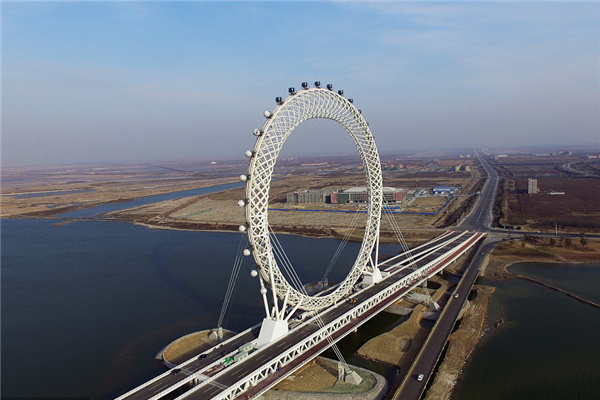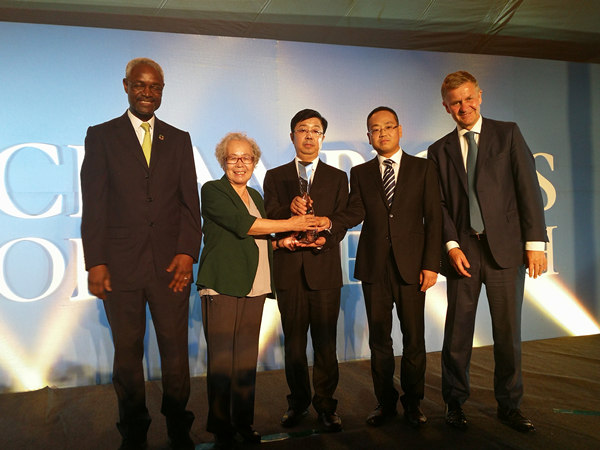

Warmer winters have continuously appeared for 16 years in China, and the sea level has risen about 20 to 30 cm over the past 100 years. These and other extreme weather events are raising concern for the implications of climate change in China.
Meanwhile, China's CO2 emission growth is projected to be twice as large as in the OECD (Organization of Economic Cooperation and Development) countries by 2030, although its per capita emissions will still be lower.
The close linkage between air pollution and climate change points to the possibility of addressing these two issues together. Integrating air pollution abatement and climate change mitigation policies will pave the way for a low-carbon economy in Asia, says Cornie Huizenga, executive director at the Clear Air Initiative for Asian Cities (CAI-Asia) Center.
Huizenga was addressing a congregation of government officials and business leaders at the Leadership Program on Environment for Sustainable Development held last month, sponsored by the Center for Environmental Education and Communications under the Ministry of Environmental Protection, HSBC China and Tongji University.
The program, started in 2007, aims to cultivate environmental awareness for government officials who are in charge of frontline environmental protection work, as well as representatives from enterprises, NGOs and media.
With the continuous expansion of cities in Asia and China in particular, the fight against air pollution and climate change is meeting new challenges, said the CAI-Asia director, adding that it is necessary to examine the impact of such changes.
Urbanization in China will continue over the next 20 years. It is estimated that 350 million people will be added into the urban population by 2025, when there will be 221 cities with more than 1 million inhabitants within the country, according to the study from McKinsey Global Institute.
Energy consumption, in turn, is expected to rise significantly. The study finds out that by 2025, urban China will account for 20 percent of the global energy consumption, taking up to one-quarter of the growth in the world's oil demand.
"The growth momentum would be more obvious if we look at vehicles in China," says Huizenga, pointing out that the number will go up from something like 90 million in 2005 to 405 million in 2035. In Beijing alone, there are 1,300 new vehicles added per day.
"In China, there is a very active air quality management policy. When we are trying to reduce air pollution, we are also doing something to reduce climate change. The strong linkage between them offers potentially large cost reductions compared to treating those policies in isolation," says Huizenga, citing such extreme weather events as drought, storm, strong wind, high temperature and flood as some of the symptoms of climate change in China.
However, the best co-benefit strategies are the ones based on carbon avoidance, rather than reduction, notes Huizenga.
"This is especially relevant for Asia where many of the greenhouse gas emissions are not yet there, unlike Europe and USA where energy and transport sectors are already largely mature."
To combat these challenges, China's National Action Plan on Climate Change and the 11th Five-Year plan (2006-10) have explicit goals to achieve, says Lu Xuedu, deputy head of the Ministry of Science and Technology of China (MOST).
It aims to reduce energy consumption per unit of gross domestic product (GDP) by 20 percent by 2010. China also aims to increase the share of renewable energy to some 10 percent and strengthen its capacity to combat climate change, with technological innovation identified as the key area to be explored.
However, the impact of these policies probably will not be enough, according to the CAI-Asia director.
"We need to move from awareness to analysis and action in the form of policies and investments. In the future we'll have to intensify climate change action in China, both at the national and local level."
Fuel switching, bus rapid transit systems, green buildings, efficient lighting programs and people's overall behavioral changes are some of the areas that could be explored for solutions to climate change and air quality management, He says.
China also needs appropriate local financing mechanisms that will enable cities to generate clean infrastructure and buildings.
According to Lu, technology remains the key problem in promoting low-carbon economy in China.
The number of approved CDM (Clean Development Mechanism) projects in China by the National Development and Reform Commission reached 1,295 by May 13, 2008, according to the statistics from China's official CDM website.
CDM is an arrangement under the Kyoto Protocol that allows industrialized countries to contribute to reducing greenhouse gases by investing in the energy-efficient technologies in developing countries.
Despite that, the dissemination of cleaner technologies from developed to developing countries still needs to be sped up, says Lu. He also calls for more preferential and free technological transfer to China.
"It's not only about buying advanced equipment and technology. China needs to strengthen its R&D capability in order to meet the challenges of a green future."
(China Daily 06/23/2008 page5)













